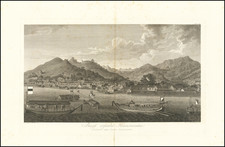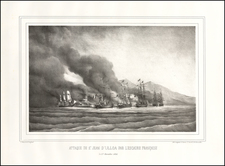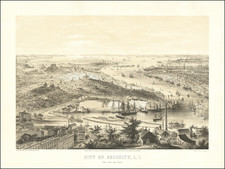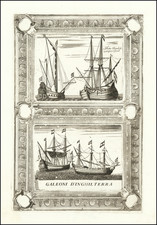This painting by James Gale Tyler, vividly captures the dynamic interplay between sea and sky—a hallmark of this artist's oeuvre. The composition centers on a 15th-century Spanish square-rigged ship (ascribed on the verso "Columbus Caravel"), its sails billowed by a stiff breeze, navigating through the churning blue waters. Tyler’s masterful use of color and light imbues the scene with a palpable sense of movement, as the ship cuts through the waves towards the New World.
The artist's brushwork is particularly noteworthy for its ability to convey texture and motion. The frothy whitecaps on the waves are rendered with swift, dexterous strokes that contrast with the detail of the ship’s rigging and woodwork.
The painting communicates a sense of romantic adventure associated with the early exploration of the New World in the popular consciousness of the early 20th century.
Date roughly estimated.
James Gale Tyler (1855-1931) was one of America's foremost marine artists, celebrated for his evocative depictions of maritime life. Born in Oswego, New York, Tyler developed an early fascination with the ocean, and by age 15, he was already drawn to seagoing vessels. He moved to New York City for his only formal art training under A. Cary Smith, where he began to develop his distinctive style, favoring mood and impression over detailed realism. His most famous works arose from his annual visits to Newport, Rhode Island, between 1900 and 1930 to paint the America's Cup Races. Tyler also gained recognition through his illustrations in major publications such as Harper's, Century, and Literary Digest, and he spent significant periods working in both New York and Providence.
Tyler's broad range of subjects included all types of boats—from old sloops to clipper ships—and various maritime scenes. He was a member of several prestigious art societies including the Brooklyn Art Club and the Salmagundi Club, and his work was exhibited at major venues like the National Academy and the Boston Art Club. His paintings, known for their subtle effects of light and vibrant color, are part of permanent collections in institutions such as the Corcoran Gallery in Washington, D.C., and the Tokyo Museum. Having spent most of his life in Greenwich, Connecticut, Tyler moved to Pelham, New York in his last year.











![(Complete Battle of the Nile Series) Battle of the Nile, the Attack and Sunset... Plate [1] [with:] Battle of the Nile, at 10 O'Clock at Night... Plate 2d. [with:] Battle of the Nile, Near Midnight... Plate 3. [and:] Battle of the Nile, on the Ensuing Morning.](https://storage.googleapis.com/raremaps/img/small/98054.jpg)

![[Whaling Operations] Pesca della Balena | Pesca del Pesce Sega](https://storage.googleapis.com/raremaps/img/small/78472.jpg)


